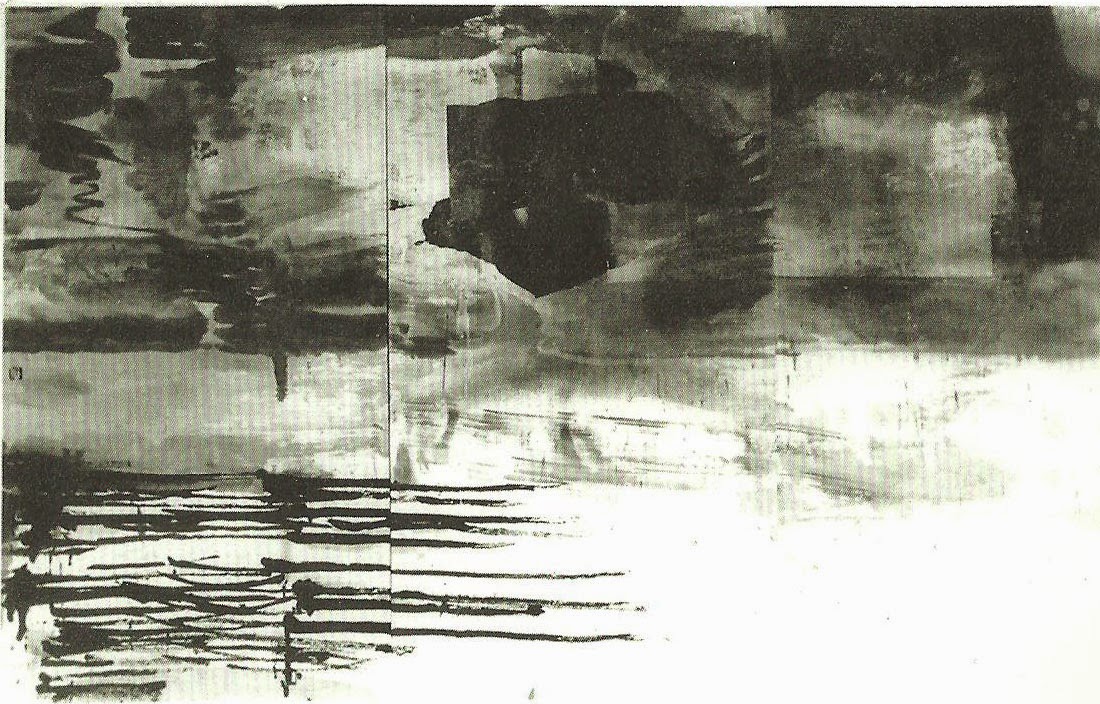"I frequently tramped eight or ten miles through the deepest snow to keep an appointment with a beech tree, or a yellow birch, or an old acquaintance among the pines".
The image below was referenced from a brush and ink sketch which I had previously developed in print. This was a second attempt which I felt was less successful. The ink reacted differently on the plate, there were fewer tonal values and the composition a little weak with trees appearing in a row. I am also having great difficulty in keeping the paper clean and tidy which is very frustrating. The paper I used was also different to that I had printed on previously with one side having a very prominent lined texture. At first glance I perceived this as rather distracting but now feel it is not such a failure and can be seen to add interest and cohesion within the composition. There is significant use of repetition throughout the work. I made two prints, one on the textured side and one on the smooth side.
Below is the image with top section cropped. I feel it is stronger than the original where the complete trees are represented, but has lost some of the more expressive mark making.
Reflecting on my previous blog entry showing a geographic field design a new concept has presented itself. I thought this could be extended by creating a shaped mount of a field. This would be placed over the plate before lifting a print, thus producing an image contained within the shape of the field and referencing elements of the geographical landscape of oak trees situated on pastures and farmland. The shape could be designed to include the Ogham symbol for the oak tree indicating where each tree grows.
Experimented with various papers which I had purchased from Print to re work brush and ink sketches. The mark making appeared quite different, more controlled and the paper buckled. One good result on creased rice paper using square ended pen and ink - I love the way the ink responds to rice paper. I will explore this media further alongside brush and ink work on good quality 300gsm watercolour paper.



























